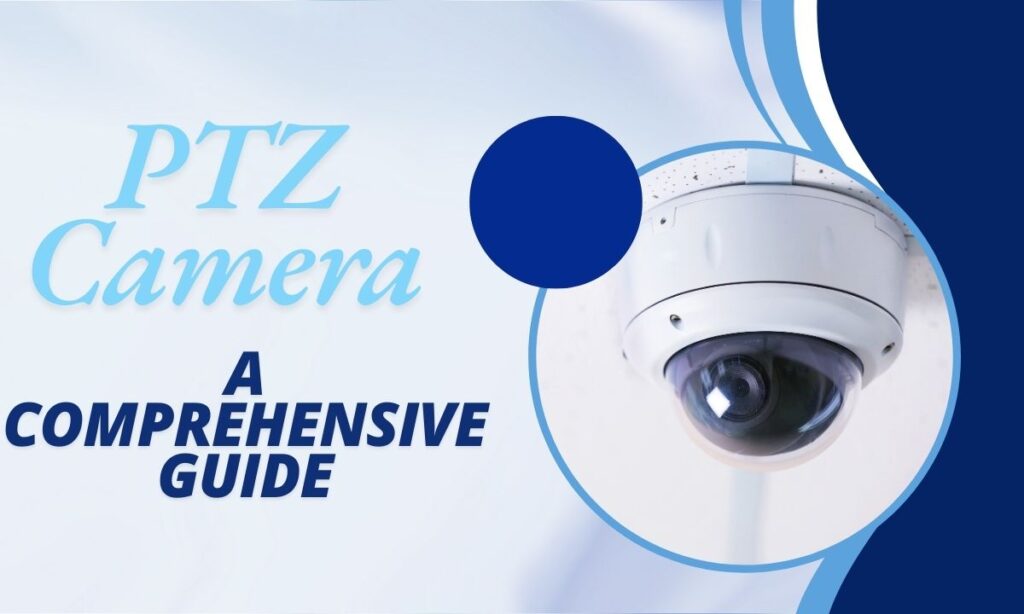What is PTZ Camera?
A PTZ camera (Pan-Tilt-Zoom camera) is a versatile surveillance camera that can rotate horizontally (pan), tilt vertically (tilt), and zoom in or out, providing a broad and flexible viewing range. PTZ cameras are widely used in security systems, live streaming, and monitoring environments due to their dynamic coverage and precision control.
Key Features of PTZ Cameras
- Pan, Tilt, and Zoom Functionality:
- Pan: The camera can rotate horizontally, covering a wide area, typically between 0° and 360°.
- Tilt: Vertical movement allows the camera to cover areas above and below its horizontal line, usually between 0° and 180°.
- Zoom: Optical zoom provides a detailed view of distant objects, while digital zoom enhances close-up precision.
- Remote Control Capabilities: PTZ cameras can be remotely controlled via software, apps, or hardware controllers, enabling real-time adjustments to the field of view. This feature is particularly useful in surveillance systems where tracking moving subjects is essential.
- Preset and Auto-Tracking Modes: Many PTZ cameras support preset modes, allowing users to predefine specific areas to focus on. Advanced models also include auto-tracking technology that automatically follows moving objects within the camera’s field of view.
- High-Definition (HD) and 4K Resolutions: PTZ cameras often come with high-definition video capabilities, including 1080p or even 4K resolution, ensuring crisp and clear images. These high-quality images are crucial in security settings where identifying details such as faces and license plates is important.
- Low-Light and Night Vision: Equipped with infrared (IR) LEDs, PTZ cameras can capture clear video in low-light or complete darkness, extending their usability 24/7. Features like Wide Dynamic Range (WDR) further enhance image clarity in challenging lighting conditions.
- Weatherproof and Durable Designs: Outdoor PTZ cameras are built to withstand harsh weather conditions, with IP65 or higher ratings. They are designed to be dustproof, waterproof, and resistant to extreme temperatures, making them suitable for outdoor installations.
Common Uses of PTZ Cameras
- Security and Surveillance: PTZ cameras are widely used in security systems for monitoring large areas such as parking lots, malls, airports, and stadiums. Their ability to pan, tilt, and zoom makes them ideal for covering vast spaces without the need for multiple fixed cameras.
- Live Streaming and Broadcasting: PTZ cameras are popular in live event broadcasting, including sports events, concerts, and webinars. They offer smooth motion control and high-quality video, making them perfect for professional video production and streaming setups.
- Video Conferencing: Many modern PTZ cameras are designed for video conferencing, especially in large meeting rooms. The camera can zoom in on participants or track the speaker automatically, ensuring dynamic and engaging communication.
- Traffic and Public Space Monitoring: Traffic control centers and municipal surveillance systems often rely on PTZ cameras for monitoring roadways and public areas. The zoom functionality allows operators to focus on specific incidents, such as accidents or congested intersections, in real time.
Factors to Consider When Choosing a PTZ Camera
- Resolution: Higher resolution cameras (1080p or 4K) offer more detail but may require more storage and bandwidth. Choose a resolution based on your specific needs, such as general surveillance or detailed identification.
- Zoom Capabilities: Optical zoom is critical for maintaining image clarity when zooming in. Depending on your requirements, opt for cameras with higher optical zoom levels (e.g., 10x, 20x, or 30x).
- Field of View: Check the pan and tilt range of the camera to ensure it can cover the areas you need. Some PTZ cameras offer full 360° pan and a wide vertical tilt range.
- Control Interface: PTZ cameras can be controlled through various means, including software, mobile apps, or physical controllers. Consider how you’ll control the camera based on your setup and preferences.
- Weatherproof Rating (for Outdoor Cameras): If the camera is intended for outdoor use, ensure it has an adequate IP rating to withstand environmental conditions such as rain, dust, and temperature fluctuations.
- Power Source: PTZ cameras can be powered through traditional electrical wiring or via Power over Ethernet (PoE), which combines power and data transmission in one cable. PoE cameras are easier to install and more convenient for networked setups.
Benefits of Using PTZ Cameras
- Cost-Effective Coverage: One PTZ camera can cover a large area, reducing the need for multiple fixed cameras, thus lowering installation and maintenance costs.
- Enhanced Security and Flexibility: PTZ cameras offer real-time control, allowing security personnel to respond quickly to incidents by zooming in on or tracking suspicious activity.
- Automated Surveillance: Advanced PTZ cameras with auto-tracking and motion detection can autonomously monitor and follow objects, improving security without constant manual oversight.
- Scalability: PTZ cameras integrate easily into existing surveillance systems, making them ideal for expanding coverage in both small and large setups.
Best PTZ Cameras in 2024
If you’re looking to invest in a PTZ camera, here are some of the top models available in 2024:
- Hikvision DS-2DE4220IW-DE:
- 20x Optical Zoom
- Full HD 1080p Resolution
- IP66-rated Weatherproof Housing
- Axis Communications Q6125-LE:
- 30x Optical Zoom
- HDTV 1080p Resolution
- Built-in Infrared Illumination
- Sony SRG-300H:
- 30x Optical Zoom
- Full HD 1080p Resolution
- Ideal for Broadcasting and Video Conferencing
- Dahua SD59225U-HNI:
- 25x Optical Zoom
- 2MP Full HD Resolution
- IP67 Weatherproof Rating
Conclusion
A PTZ camera is an essential tool for anyone needing versatile, high-quality surveillance or video production. Its ability to pan, tilt, and zoom ensures comprehensive coverage, while features like auto-tracking and high-resolution video make it indispensable in security systems, live streaming, and public monitoring. When choosing the right PTZ camera, consider factors such as resolution, zoom capabilities, and control options to ensure the best performance for your specific needs.
